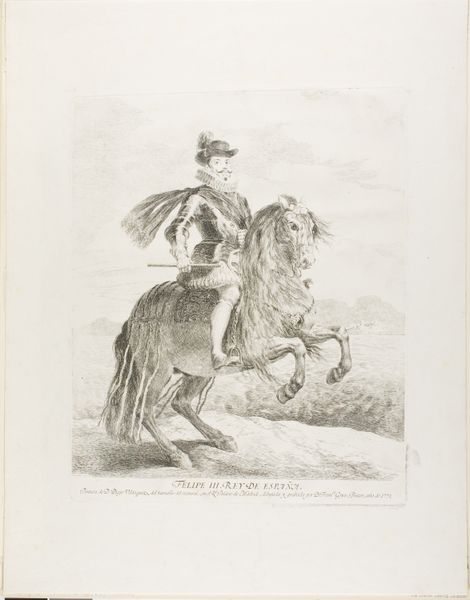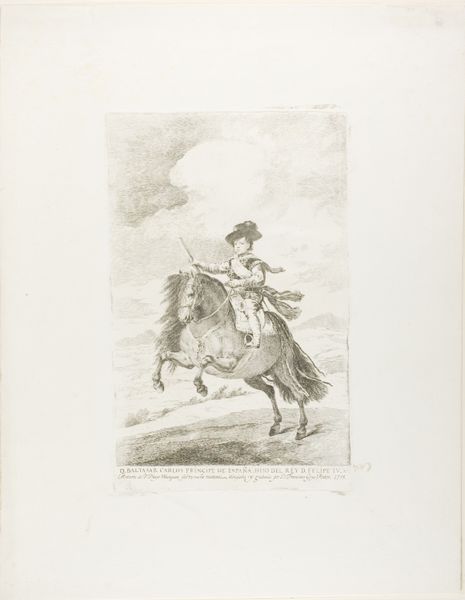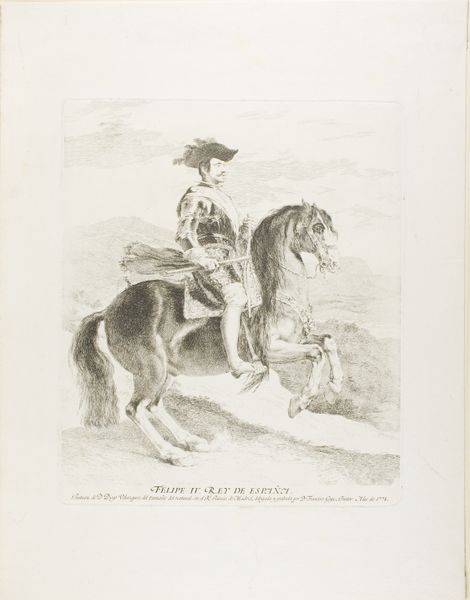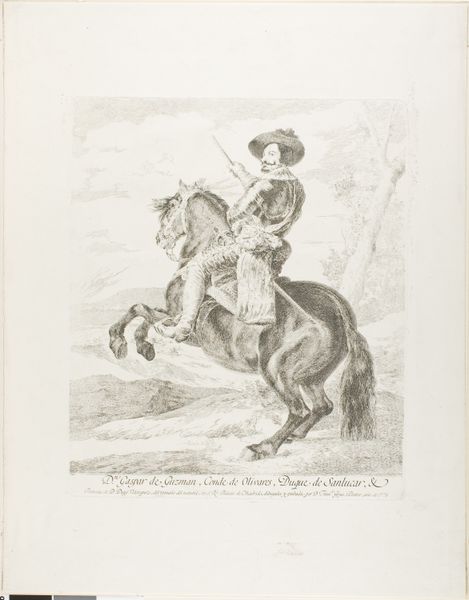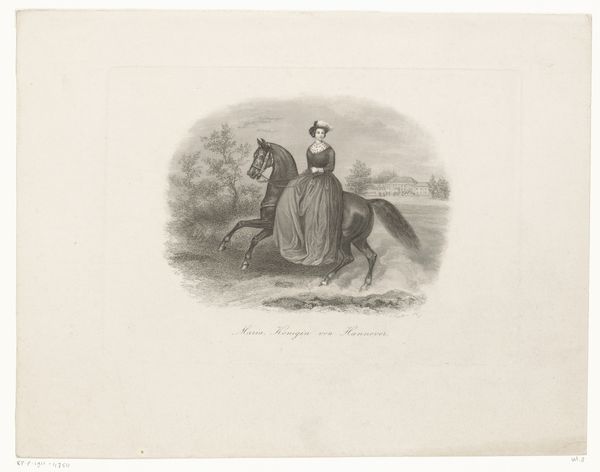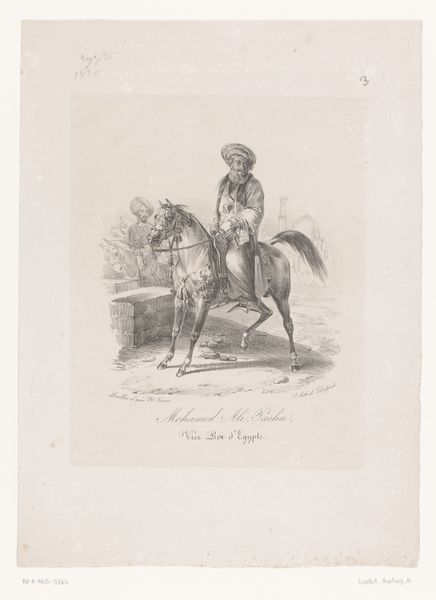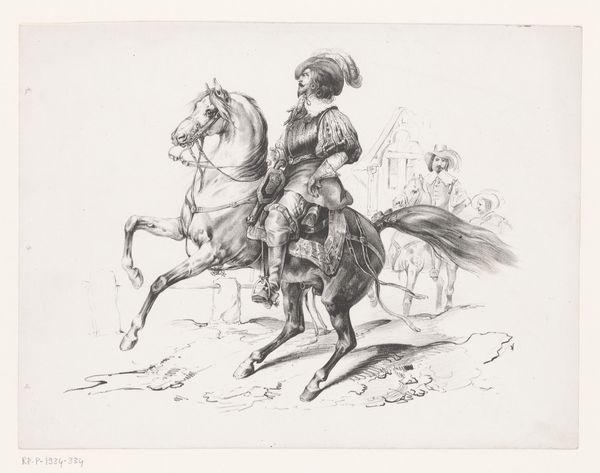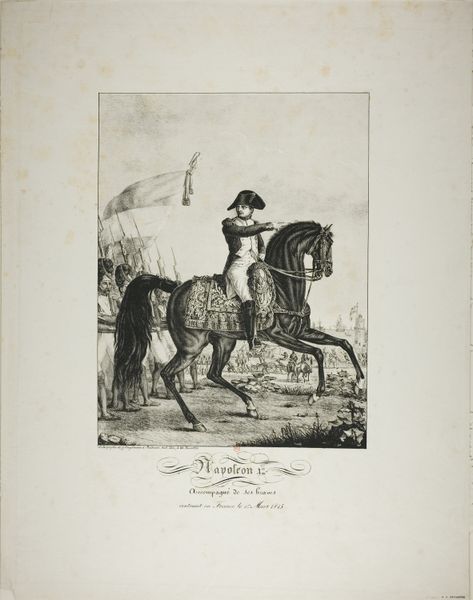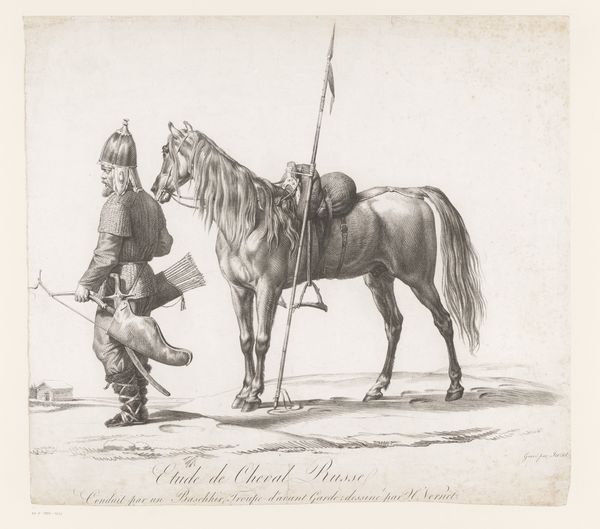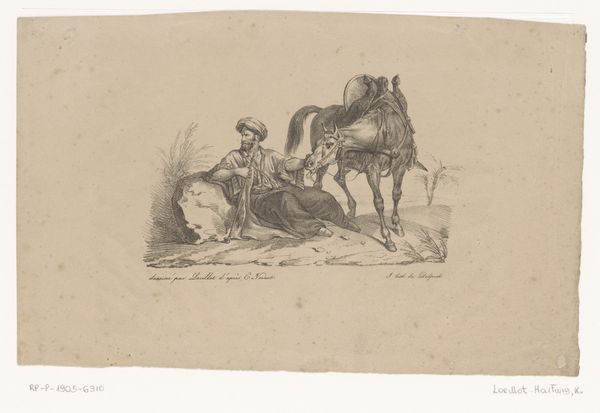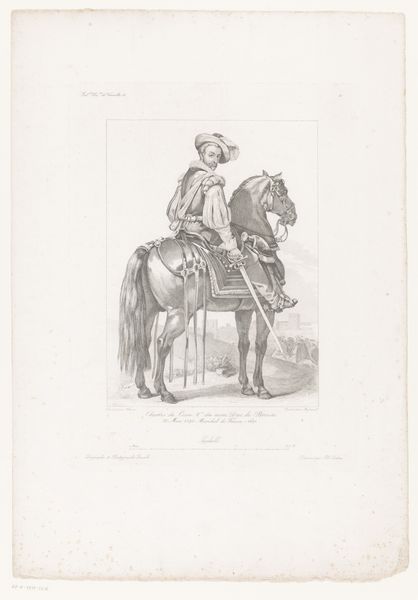
drawing, print, etching, paper
#
portrait
#
drawing
# print
#
etching
#
paper
#
history-painting
#
academic-art
Dimensions: 344 × 311 mm (image); 372 × 311 mm (plate); 554 × 430 mm (sheet, folded at top & bottom)
Copyright: Public Domain
Editor: So, here we have Francisco de Goya’s "Isabel de Borbon," an etching from 1778, currently at the Art Institute of Chicago. It’s quite striking in its detail, especially considering it's a print. What stands out to you when you look at it? Curator: What resonates is the subtle dialogue Goya establishes between power and vulnerability. Consider the symbolic weight of a royal portrait—historically intended to project authority, permanence, and divine right. Editor: Right, the whole purpose was to make the royalty seem all-powerful. Curator: Precisely. But Goya introduces a nuance. Look at Isabel's expression; there's a hint of melancholy, or perhaps even apprehension. The intricate patterns on her dress, the detailed rendering of the horse… These are all markers of status, but they also act as a kind of armour. Does the weight of the garment hint at something else beyond royalty? Editor: That's an interesting way of seeing it. The patterned robe is kind of imprisoning. I guess it does imply her duties, maybe? How does that play into its role as a historical document? Curator: It compels us to see beyond the surface. Yes, it's a record of Isabel, Queen of Spain, but it also serves as a reflection on the burden of leadership and perhaps, the limitations placed upon women even within positions of immense power. The symbols work on multiple layers. Editor: That gives me a lot to think about, looking at it less as a straightforward portrait and more as a psychological study. Curator: Exactly! Images always hold more meaning than their superficial content. It’s the ongoing story symbols can convey, even centuries later, which connects the Queen with modern society.
Comments
No comments
Be the first to comment and join the conversation on the ultimate creative platform.
